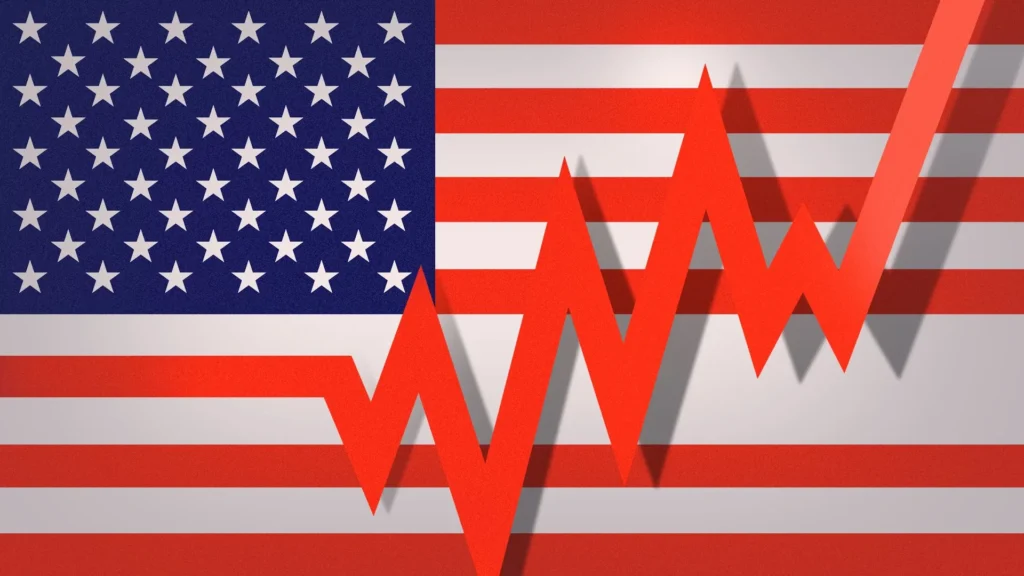After several years of uncertainty marked by inflation, supply chain issues, and global conflicts, the U.S. economy recovery is finally gaining strong momentum in 2025. With unemployment at record lows, wages steadily rising, and the stock market rebounding, confidence is returning to businesses and consumers alike. The swagger is back.
In this article, we’ll break down the key drivers behind this economic comeback, explore what it means for everyday Americans, and look ahead at what could sustain or challenge this positive momentum.
A Strong Start: Economic Growth Surges in 2025
The first half of 2025 has shown clear signs that the U.S. economy recovery is not only real but accelerating. The U.S. GDP grew at an annualized rate of 3.1% in Q1, followed by an even stronger 3.5% in Q2, according to the U.S. Bureau of Economic Analysis.
These numbers reflect strong performance across sectors:
- Manufacturing output rebounded as supply chains normalized.
- Technology and service sectors saw increased demand.
- Housing construction picked up after a period of stagnation.
- Retail and hospitality returned to pre-pandemic levels in many states.
Economists credit a combination of factors including lower interest rates, improved global trade, and increased government investments in infrastructure and clean energy.
Job Market Resilience Driving Confidence
One of the most encouraging signs of U.S. economy recovery is the health of the job market. As of June 2025, the national unemployment rate dropped to 3.4%, its lowest level in over 50 years.
Key job market highlights include:
- Over 300,000 jobs added each month since January.
- Wage growth averaging 4.2%, outpacing inflation for the first time since 2021.
- Labor force participation reaching 63.5%, with gains among young workers and retirees re-entering the workforce.
This robust job creation has fueled consumer confidence, with the University of Michigan’s Consumer Sentiment Index hitting its highest point since 2019.
Inflation Finally Tamed
One of the biggest challenges to economic recovery in recent years has been inflation. After peaking in 2022, prices for essentials like food, gas, and rent put pressure on households.
But in 2025, the tide has turned.
- The Consumer Price Index (CPI) has stabilized, with year-over-year inflation hovering around 2.3%.
- Energy and food prices have normalized thanks to stable global supply and improved domestic production.
- The Federal Reserve has gradually lowered interest rates to 4.5%, easing borrowing costs for consumers and businesses.
With inflation under control, Americans are starting to spend again — but more wisely. Savings rates are also climbing as households balance optimism with caution.
Business Investment Is Booming
Another strong indicator of the U.S. economy recovery is the surge in business investment. From small businesses to major corporations, confidence in future growth is prompting companies to invest in new technologies, infrastructure, and talent.
Key business investment trends:
- Record high corporate profits in Q1 2025.
- Manufacturing plants reopening or expanding, particularly in the Midwest.
- Growth in green energy sectors, thanks to tax credits and innovation.
- Tech hiring rebounding, especially in AI, cybersecurity, and cloud computing.
Small business optimism has also improved significantly, according to the National Federation of Independent Business (NFIB), with many reporting better access to capital and higher sales volumes.
Consumers Are Spending Again — Wisely
After years of cautious spending, American consumers are opening their wallets — but with more thoughtfulness. Retail sales have climbed steadily, with particularly strong growth in sectors like travel, personal services, and electronics.
A few notable trends:
- Domestic travel is booming, with airports reporting record traffic.
- Online and in-store shopping both thriving, as hybrid retail models expand.
- Home renovation and improvement spending continues as homeowners stay put.
- Luxury and discretionary items are back in demand, signaling growing confidence.
Consumers are still mindful of prices, but they’re no longer held back by fear. The return of confidence is helping to drive demand across the board.
Stock Market and Real Estate Rebound
The U.S. stock market has made an impressive comeback in 2025. After two volatile years, the S&P 500 is up nearly 18% YTD, fueled by strong earnings reports and renewed investor confidence.
Key drivers:
- Tech giants reporting record earnings
- Energy and healthcare stocks performing well
- Retail and consumer goods stocks bouncing back
Real estate, too, is recovering. While prices in some overheated markets have corrected, overall home values are rising moderately. Lower mortgage rates (now averaging around 5.1%) have encouraged more homebuyers to return to the market.
Global Positioning: The U.S. Leads Developed Economies
Compared to other advanced economies like the EU, Japan, and the UK, the U.S. economy recovery is outpacing the competition. International confidence in the U.S. dollar and American markets remains high.
- The U.S. remains a magnet for global investors, especially in tech and clean energy.
- Exports are increasing, particularly in aerospace, pharmaceuticals, and agricultural products.
- Trade relations have improved, with key agreements renewed or renegotiated under favorable terms.
This leadership position may help the U.S. weather future uncertainties better than many of its peers.
Challenges to Watch: Not Out of the Woods Yet
While there’s plenty to celebrate, economists warn against declaring total victory just yet.
Potential headwinds include:
- Geopolitical tensions, especially in Asia and the Middle East.
- A possible credit crunch for startups and small businesses.
- Consumer debt levels rising due to increased spending and relaxed lending.
- Climate-related disruptions that could affect agriculture and infrastructure.
Policymakers and investors alike will need to stay vigilant to ensure the momentum continues.
How the U.S. Economy Recovery Affects Everyday Americans

For the average American, the recovery is starting to feel real:
- More job opportunities and better pay
- Cheaper loans and credit options
- Rising retirement savings and stock portfolios
- Confidence to plan for the future — vacations, home buying, education
There’s still a long way to go for many, especially those hit hardest during the pandemic years. But the overall mood is shifting from survival to progress.
What Will Sustain This Growth?
Economists suggest that for the recovery to last, several conditions must be met:
- Continued stable inflation and smart monetary policy
- Strong public and private sector investments in infrastructure, energy, and innovation
- Resilient consumer spending balanced with rising savings
- Greater economic inclusion — ensuring benefits reach rural areas, minority communities, and underserved industries
If these pillars remain strong, 2025 could mark not just a rebound, but the beginning of a new era of sustained U.S. economic growth.
Final Thoughts
The swagger is returning to the American economy — and this time, it feels more grounded. After years of uncertainty, many indicators suggest that the U.S. economy recovery is real, broad-based, and sustainable.
Challenges remain, and overconfidence would be premature. But for now, optimism is not only allowed — it’s justified.
Read Next – Trump’s Talk of Firing Fed Chair Powell Shakes Markets Again






